Matador Network's Blog, page 797
August 26, 2020
VOMA is fully immersive museum
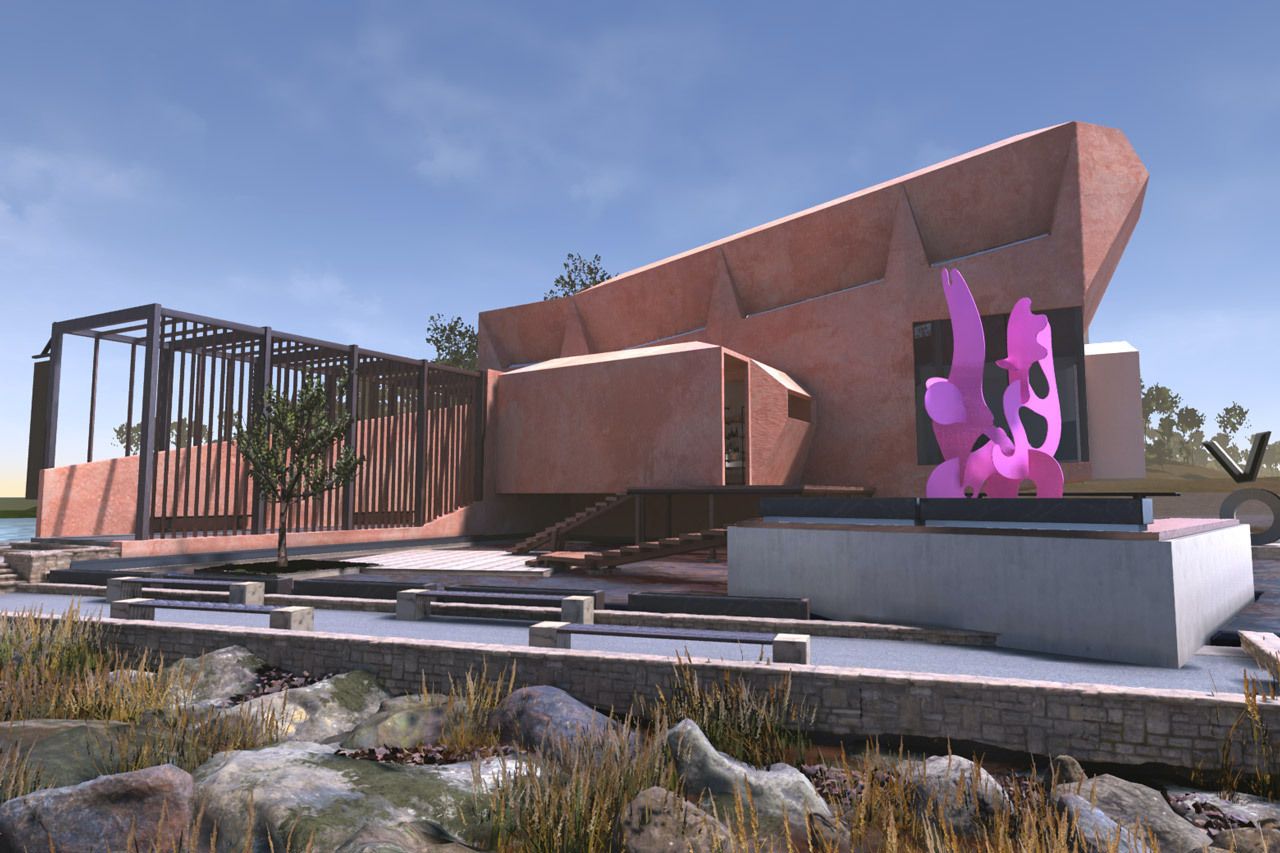
Most people are probably sick of virtual museum experiences by now, but that’s usually because a virtual trip can’t compare to the real thing. Now a new museum is putting the virtual experience front and center. The Virtual Online Museum of Art (VOMA) will be the world’s first fully interactive virtual museum, presenting works from renowned institutions like the Musée d’Orsay, Whitney Museum of American Art, New York City’s Museum of Modern Art, and the Art Institute of Chicago.
View this post on InstagramA post shared by VOMA (@vomaspace) on May 8, 2020 at 8:31am PDT
Rather than an information card, the art is shown alongside a variety of media and other digital resources to help visitors dive deeper into the work. In addition to simply admiring the artwork, you can also virtually tour the museum’s grounds.
Stuart Semple, the artist behind the project, said, “A virtual viewing room can feel like a lonely place — quiet, empty, sometimes slightly uneasy. In building and curating VOMA, we wanted to get away from that feeling, which is not all that different from walking into a snooty, silent gallery space and feeling a bit self-conscious. We wanted to integrate the sense of community and buzz of going to a cool museum, where there are often so many different shows going on, and immersive or interactive experiences.”
It was reported that famous artworks such as Édouard Manet’s “Olympia,” “The Garden of Earthly Delights” by Hieronymus Bosch, and Caravaggio’s “The Incredulity of Saint Thomas” will be on display at the VOMA but we’re waiting for the opening for confirmation.
The museum is scheduled to open early September, and is accessible for free from anywhere in the world via VOMA’s website. 
More like thisArt + ArchitectureThe best museums to visit virtually from your sofa, and what to look at
The post VOMA is the world’s first fully immersive virtual museum appeared first on Matador Network.

ANA airline testing elbow doors

In the continuing quest to eliminate touchpoints and limit the spread of COVID-19, one airline is addressing one of the most germy areas of an airplane: bathrooms. Japan’s All Nippon Airways, in collaboration with aircraft interior company Jamco, is testing a new doorknob design that would allow passengers to open the bathroom door with their elbows. The design is currently only being tested at the airline’s lounge at Haneda Airport in Tokyo, but if successful, the feature could be rolled out on its aircrafts.

Photo: All Nippon Airways/Jamco
The new design is a sliding locking device that can be easily operated by an elbow. It shifts from side to side, locking and unlocking the door, while the handle can be pressed with an elbow, making it possible to push open the bathroom door without touching any common surfaces with your hands.
While elbow-operated doors won’t completely ease travelers’ concerns about flying during the pandemic, they should create some peace of mind. 
More like thisNewsThese new, colorful outdoor toilets in Tokyo are completely transparent
The post This airline is testing elbow-operated bathroom doors so your hands stay clean appeared first on Matador Network.

Virgin Atlantic free COVID insurance

With travel restrictions slowly relaxing around the world, Virgin Atlantic has just raised the stakes for airlines hoping to coax back passengers. The airline has announced that all its passengers will receive complimentary COVID-19 insurance from now until March 31, 2021. This covers both new and existing flights operated by Virgin Atlantic or any of its partners, including Delta and Air France-KLM. It also applies to Virgin Holiday bookings.
Virgin Atlantic is calling its insurance plan “the most comprehensive COVID-19 cover provided by any major airline,” according to a statement reported by Lonely Planet. Through Allianz Assistance, the policy covers up to $656,000 per customer and includes not only travel expenses like accommodations and transportation but also quarantine costs, repatriation, coronavirus-related medical expenses, and more.
Earlier this month, Virgin Atlantic restarted flights to 17 destinations from London Heathrow, including New York, Los Angeles, Barbados, and Tel Aviv. More flights are expected to resume in the coming months, including Las Vegas and Mumbai in September and a handful of Caribbean islands in October.
Of the decision to include COVID-19 insurance with these flights, the airline’s chief commercial officer Juha Jarvinen said, “Whether it’s to visit friends and relatives or take a well-deserved break, we believe this complimentary cover will provide some added reassurance for our customers as they start to plan trips further afield.” 
More like thisTravel5 travel insurance plans that will cover you for COVID-19
The post Virgin Atlantic announces free COVID-19 insurance for passengers, starting now appeared first on Matador Network.

August 25, 2020
Audacity Digi and Black travelers

For many Black Americans, travel has long been an odd-defying act of resistance. While we travel for luxury and leisure, there are many nuances to the Black travel experience. For some, travel is a way to create new realities outside of the widely traumatic and often fatal truths we face at home. Though we carry our identities with us everywhere we go, the continuous witnessing of brutality against Black bodies may be reason enough to seek both safe spaces and international opportunities.
Audacity Festival — created by Nomadness Travel Tribe founder Evita Robinson — is a festival for travelers of color that speaks to the desire of Black travelers to use travel as a means of change. With COVID-19 forcing the cancellation of countless events, Audacity Fest nimbly pivoted to Audacity Digi — a series of interactive, online events. On August 1, the second volume of Audacity Digi took place giving Black travel enthusiasts insight into the tools necessary to use travel as a means of liberation. This edition of the conference spoke to making long-term investments abroad for the sake of generational wealth and residual income — something many Black folks, particularly Audacity’s millennial audience, are becoming interested in.
If you missed out on the conference, here’s how Audacity Digi’s experts inspire us to create new realities through travel.
Travel for generational wealth building
It’s no secret that Black folks are systematically disenfranchised, so opportunities and tools for building generational wealth aren’t widespread in our communities. Audacity Digi’s “How International Travel Influences Business Decisions” panel addressed these disparities head on. International investors with experience in various industries like real estate, agriculture, and blockchain technology spoke about making investing abroad a reality.
Keenan Beasley, founder of Venture Noire and KuKua, spoke about gaining financial freedom and generational wealth by investing in agriculture in countries like Colombia. Beasley stressed the importance he finds in working with Afro-Colombians to provide opportunities for Black, indigenous farmers throughout the diaspora. His work tackles the barriers that stop Black folks from farming, such as financial resources and infrastructure, and he considers agriculture a great entryway into international investing.
When asked why he thinks it’s crucial to invest in Black businesses, Beasley said, “Black culture was the incubator for the world, but there was no incubator for Black culture. So I knew I had to do something.”
Panelists Yahya Bey — a Thailand-based cryptocurrency, real estate, and wellness investor — brought his knowledge of purchasing a hostel and a wellness training business to the table. Bey’s expertise in the cryptocurrency space also taught viewers that blockchain technology is currently one of the greatest wealth-builders.
Serita Braxton, author and real estate investor, talked about closing on her first residential property. Braxton’s journey began as a vacation to Tenerife, the largest of the Canary Islands. Instead of investing in mainland Spain as she initially thought, she used her vacation to scope out prospective properties. Braxton plans to reside on the property but will turn the home into a rental property in the future.
Xavier Owona, the CEO of Black Voyageurs, uses his passion for Africa, specifically Cameroon and Senegal, to fuel his commercial real estate investments. Though he is investing for financial freedom, he also sees his business as a way to directly contribute to the growth and development of Cameroon’s economy. He described the investment opportunities he finds in African countries as a rewarding way for the diaspora to help build our ancestral lands rather than the majority-white investors who currently occupy this space.
Though investing abroad can be fruitful, there are many logistical and financial hurdles the panelists shared. Thailand requires having a Thai national as your business partner. If you’re seeking permanent residency in Spain, you must purchase a property of at least 350,000 euros.
No matter the country, Beasley recommends always partnering with someone to ensure local ownership. In Cameroon, a cash-heavy country, Xavier suggests having currency onhand or using a service like Transferwise to make money transfers easier. Though travel is currently complicated, when asked if visiting investment properties in person was a must-do, all panelists nodded to on-the-ground visits as key to any successful venture.
Investing in a future abroad
Destination Own, a collective of international real estate agents, helps match potential homeowners with global properties. Audacity Digi spoke with Janell Muhammad, CEO of Destination Own, about how travel enthusiasts can use homeownership to live in destinations like Ghana, South Africa, Mexico, and Colombia.
From property taxes to cultural norms, the company pairs prospective movers with locals who can give them a realistic view of their proposed country’s daily life. The Black-owned company digs deeper than tourism and guides potential buyers through immersive real estate tours in their countries of interest and local activities to aid in the decision-making process.
With particular caveats like cash-preferred countries, such as Ghana, Muhammad recommends preparing to pay for some property mortgages upfront. On the more accessible end of life abroad, Mexico could be a top option for Black travelers looking to leap abroad. The culture-rich country has lenient immigration rules while being affordable and close in proximity to the US.
Muhammad shared that she is often asked about the safety concerns from Black folks interested in living overseas and leaving the US. She urged people to note that safety is relative and that although, of course, there are some countries that are more dangerous, many are generally safe.
Living as an expat post COVID-19
Beyond financial pursuits, travel can be a necessary means of refuge for Black American travelers. At Audacity Digi, viewers heard from the tourism boards of Dubai, Barbados, and Seychelles. These countries are viable options for the Black traveler looking for a change of scenery.
A few weeks ago, Barbados’ tourism board announced its 12-month Welcome Stamp — an initiative to bring post-COVID-19 tourism dollars back to the island using digital nomads. The board expressed that the remote-work friendly visa will serve as a way to reinvest tourism funds into their economy — by allowing expats to live there without taking work opportunities from Barbadian people. For Black travelers who are currently working remotely, the Welcome Stamp visa may be a great option to create a new living reality outside of the US and in a Black-majority country.
For those looking to venture further, Dubai’s tourism board cited its recently open borders, existing Black expat culture, and the well-paved road to residency as reasons to move to the UAE country. From teachers to real estate investors, plenty of Black folks already call Dubai home, so there is already a welcoming community. Groups like Black Women’s Club DXB and many others exist in the thriving capital city.
And if low COVID-19 cases, a diverse population, and idyllic scenery sound like an ideal expat home, then look to Seychelles. The Seychelles’ tourism board spoke of its widely diverse population and Afro-present communities as the perfect reason to call the island home.
How to register for Audacity Digi Vol. 3
The festival didn’t miss the opportunity to recognize Blackness’s diversity, with additional panels on LGBTQ+ and intergenerational travel and traveling in a politically charged climate. Audacity Digi gave Black travelers the reassurance needed to the remaining life for ourselves outside of any borders, and the tools to navigate industries or spaces not intending our arrival.
If these topics and speakers sound like something you wish you were able to learn more about, be sure to register for Volume Three of Audacity Digi on October 24, 2020. You will receive access to both live and pre-recorded content, interactive sessions and workshops, virtual networking opportunities, and a digital expo featuring minority-owned businesses.
Editor’s note: Matador Network is a proud sponsor of Audacity Festival. 
More like thisBlack TravelHow Audacity Fest builds a community for travelers of color
The post How Black travelers are using travel to create new generational wealth and legacies appeared first on Matador Network.

The incredible true story of Mary Anning of ‘Ammonite,’ the mother of paleontology

If the trailer for Ammonite, starring Kate Winslet and Saoirse Ronan, has you hooked, you’ll be fascinated to hear that although the beautiful on-screen relationship between Winslet and Ronan may not be historically verifiable, Winslet’s character, Mary Anning, is no work of fiction.
Anning, a fossil hunter who is now praised as a pioneer paleontologist, did exist but was often discredited and rarely acknowledged by the scientific community during her time. She was born in 1799 in Lyme Regis in Dorset, England, a region now better known as the Jurassic Coast, and she made stunning discoveries throughout her life. Among many other finds, she dug out the large skeleton of a ichthyosaurus, a marine reptile thought to have lived 201-194 million years ago, when she was only 12 years of age; she found the complete skeleton of a plesiosaurus at age 24, as well as the remains of a pterodactyl five years later.
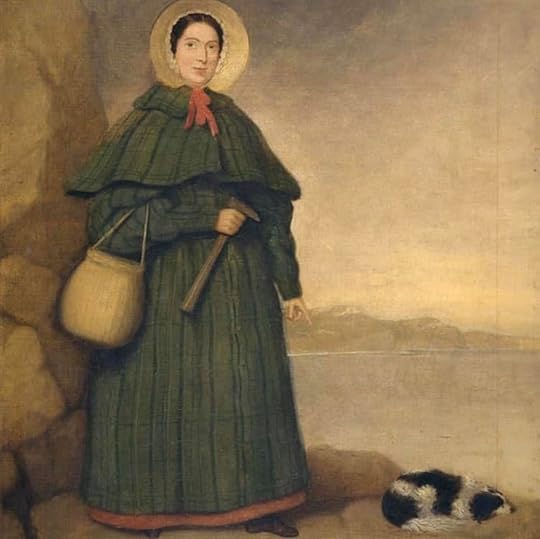
Photo: Lyme Regis Museum/Facebook
Anning was a little-educated woman of very modest background who initially sought fossils on the beaches of Lyme Regis to sell them and help her family pay their debts and keep afloat. Even after her many discoveries, many of which she sold, she struggled financially until the end of her life. She was rarely credited for her finds and never truly made a reputation as a serious scientist until after her death in 1847.
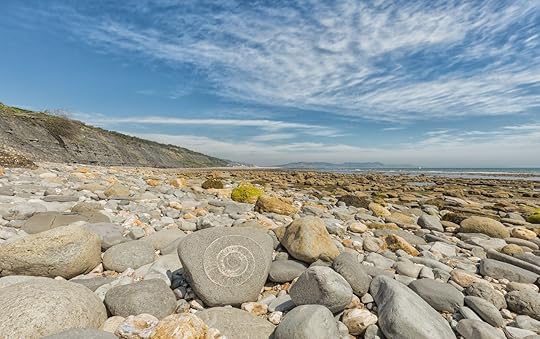
Photo: Mark Godden/Shutterstock
Today, Anning’s legacy can be found all over the Jurassic Coast. The UNESCO Natural World Heritage site, which spans 95 miles, is rich in fossils containing up to 185 million years of history. Fossil hunting is encouraged (independently and via organized walks) on the Jurassic Coast, and Lyme Regis is one of the best and safest places to find fossils in the area, especially ammonites. The town has also created a museum, the Lyme Regis Museum, on the site of Anning’s family home, where the invaluable scientific contributions of this remarkable woman are celebrated front and center in a wing that bears her name. There’s even a campaign, backed by Sir David Attenborough, to erect a statue to Anning in the town of Lyme Regis, fittingly called “Mary Anning Rocks.”
The British capital has also made up for lost time. The stunning Natural History Museum of London displays many of Anning’s finds, including her ichthyosaur, plesiosaur, and pterosaur, and acclaim the formidable work of Anning who is often justly nicknamed “the mother of paleontology.”

Photo: ShutterStockStudio/Shutterstock
Not much is known about Anning’s private life. She was never married and never had children, and the character played by Saoirse Ronan is thought to be a combination of some of the women who were present in Anning’s life, friends and collaborators, such as Charlotte Murchison (who the character is named for) and Frances Bell. Therefore, it is almost impossible to know if Ammonite is a true story. Some distant relatives allegedly objected to the lesbian interpretation of Anning’s story, but director Francis Lee (of God’s Own Country fame) defended his portrayal of Anning, tweeting “After seeing queer history be routinely ‘straightened’ throughout culture, and given a historical figure where there is no evidence whatsoever of a heterosexual relationship, is it not permissible to view that person within another context…? Particularly a woman whose work and life were subjected to the worst aspects of patriarchy, class discrimination and gender imbalance.”
Ammonite, although perhaps more than just a biography as it weaves in a wonderful queer love story, is further recognition of Anning’s work and adds to the legacy of this legendary scientist whose life story is sure to influence aspiring female scientists for centuries. While its previously scheduled debut at Cannes was scrapped due to the COVID-19 pandemic, the film will now premiere in September at the Toronto Film Festival and will be released in theaters November 13. 
More like thisParks + WildernessThe best places in the world to go fossil hunting
The post The incredible true story of Mary Anning of ‘Ammonite,’ the mother of paleontology appeared first on Matador Network.

How to prepare for a multi-day raft
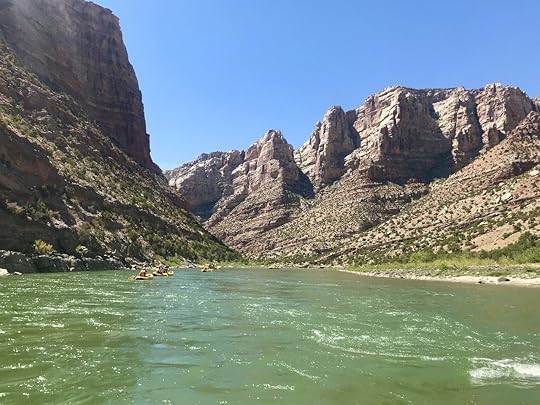
In 1929, a developer from Vernal, Utah, named Bus Hatch guided a flat-bottomed boat down a protected stretch of the nearby Green River. His aim was to take guests through Dinosaur National Monument in western Colorado and eastern Utah, exploring the canyons and conquering the rapids that had proved fierce enough to compromise the integrity of the canoes that had previously run the river. Hatch didn’t know it then, but he was about to change river running forever.
Though flat-bottomed wooden boats had been used for military purposes since the 1700s, Hatch is credited by many with inventing what would become the modern raft, albeit in wooden form, and being the first to push off the river banks of the Green for leisure. Hatch became the first “river rat,” and commercial river rafting as we know it today was born. Hatch River Expeditions became the first licensed river outfitter in the United States.
After many years of successful commercial guiding around the world, Bus Hatch passed away in 1967. Don Hatch River Expeditions, run by his son, became part of California-based expedition outfitter OARS in 2007. In mid-August, my wife Alisha and I joined OARS for a three-day run on the Green River through the Gates of Lodore inside the monument. It was our first overnight rafting trip and a chance to retrace where it all started. If adding more river time to your list of outdoor hobbies is the goal, as it was ours, a trip like this is the best way forward. You get the full experience — three days on the river, two nights of camping on its banks — and the chance to completely disconnect from everything else.
For us, it proved easy to understand why Bus Hatch was so captivated by this area all those years ago.
Preparing and packing for an overnight raft trip

Photo: Tim Wenger
Our trip was to be both an epic backcountry experience and an expedition to test the waters, so to speak, for future river trips. We’d done multiple day trips on several rivers, both commercial and private, but we didn’t know if packrafting would be our thing. Did the fact that we’d recently moved from Denver to the river-crazed Grand Valley really mean we needed to become “river people”?
We chose OARS because of their reputation for properly led excursions and environmental conservation, both of which were front and center the entire trip. A three-day run through Gates of Lodore runs $899 per person, though most permitted stretches of river including the Green also allow for private river expeditions. If you opt to pull a private permit for any stretch of whitewater, proper planning and packing for the journey are essential. Of course, you’ll need a raft or kayak capable of withstanding Class IV rapids and the knowledge and experience to captain it. OARS offers rowing clinics to train prospective guides and private river runners on proper rowing techniques and river safety protocol. Though not required to pull a permit, professional training never hurts if you can afford the $1,599 price tag. At the very least, raft with an experienced captain on multiple day-trips, slowly increasing in difficulty, prior to attempting a multi-day expedition.
Additionally, you and everyone in your party need a PFD, which stands for personal flotation device and really means “life vest,” a helmet, and plenty of water. (It doesn’t hurt to bring a water filter in case your supply runs low.) Two to three water jugs holding at least seven gallons for each raft should do it — remember, you’ll need water for drinking as well as for hygiene and cooking. On our commercial expedition, the guides brought propane cylinders and a packable gas grill to whip up steaks, potatoes, and stir fry for dinners and eggs for hot breakfast in the mornings. Such luxury isn’t mandatory, however. If you’re heading out for just a night or two and don’t mind quick meals, you can get by on canned tuna or chicken salad, PB&J, and a plethora of energy bars and other goodies. Anything that can be stored in a cooler and wrapped in a tortilla is also a strong option.

Photo: Tim Wenger
Packaged campfire meals are ideal for trips like this. My favorite option for quick morning meals are Brave breakfasts, nutrient-packed oatmeal pouches that you mix with any type of milk the night before and let mesh overnight, or quickly heat up on a camp stove before pushing off.
And for the elephant on the raft. The natural cycles of the human body don’t stop just because there isn’t a formal restroom available. On a multi-day raft trip you’ll become familiar with what’s called a “Groover” — basically, a metal poop container with a plastic toilet seat on top that you’ll have to lug with you on the raft. The groover takes its name from the days before they actually put toilet seats on the metal box, which left marks on your tush when you sat on it. Yes, that was TMI, but the principles of “Leave No Trace” are sometimes more pungent than pretty. You gotta do what you gotta do out there.
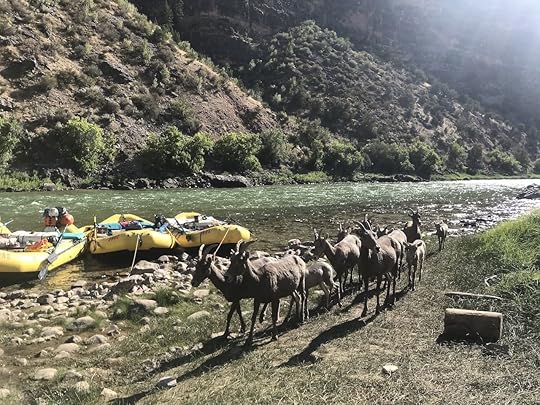
Photo: Tim Wenger
Matador’s backpacking gear guide offers guidance on selecting overnight gear, but these are the essentials: a tent, a sleeping bag and ground pad, and warm clothes for the evenings because even the desert cools off at night. You’ll also need a few large dry bags to store everything on the boat while moving down the river and to store food and belongings at camp. Food storage was a necessity on this trip, as we set our first camp alongside a small herd of bighorn sheep camping alongside the river. I hoped our presence didn’t disturb them, though with more than a century of protection, the animals in Dinosaur National Monument are quite trusting of humans. We awoke in the morning to find them not far from where we’d last seen the herd the night before.
Beyond the ability to relax, the biggest perk of river running with a commercial outfitter proved to be their sheer knowledge of both what you’re doing and where you’re doing it. Our guides were meticulously detailed, sharing knowhow of the preparation, execution, and traditions of the river. The guides also offered a nearly overwhelming amount of geographical knowledge of the surrounding canyons and river basin. After covering about 15 miles on the water and setting up camp on night two, we embarked on a four-mile hike to check out a series of petroglyphs and pictographs left in canyon walls by the Fremont people who inhabited the area more than 1,000 years ago.
Using your recreation dollars to support river conservation
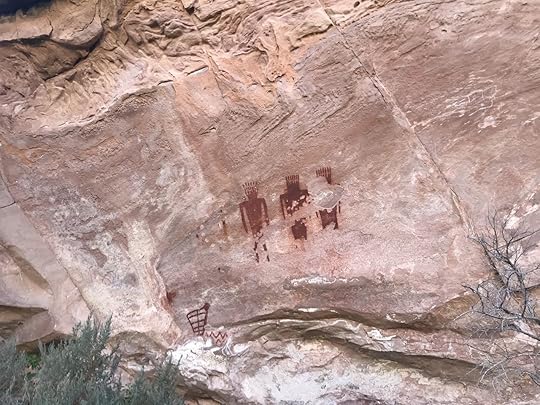
Photo: Tim Wenger
That intel isn’t used only to impress paying guests. The early days of Hatch’s river expeditions carried geologists, hunters, fishermen, and others with a vested interest in conservation. This only increased as Hatch expanded his guiding services west to the Colorado and Salmon rivers.
But it all came to head in the 1950’s when two dams were proposed on the Green, intending to flood Dinosaur National Monument. The ensuing battle against the dams would become known as the Battle for Echo Park, pitting conservationists including Hatch against builders. Through efforts led by the Sierra Club’s David Brower, grassroots lobbying action, and a good deal of trips down the Green River to raise awareness, the two dams were defeated.
This wasn’t the case on the Colorado River, currently the most heavily dammed river system in the world, or many others across the west. Still, the tradition of activism continues today. OARS fights for the protection of rivers across the American west, mostly by taking people down them. Exploitative minds need only experience this serenity once to be opened to its magnificence. Indeed, it would be morally impossible to experience a river as sacred as the Green or Yampa and not feel an urgent need to protect it — for recreation, for future generations, and for the flora and fauna that depend on its wild flow. Whether you travel with an outfitter such as OARS or pull your own permit to raft a protected stretch of water, you’re not just taking an epic trip. Your dollars also become a voice for river conservation.
The emerald hue of the Green River shone brightly in the sun on day three as we took out at Split Mountain to head back to Vernal, reflecting the infinite value of those that have fought to protect it. A budding passion for the river burned brightly within us as well. After the spring and summer of 2020, spending three days staring at red rock canyons, the pancake-like rocks of the Lodore formation towering above us, and nothing in front but rampant whitewater was exactly what we needed. 
More like thisActivismThrough film, BIPOC people advocate for wild rivers of the American West
The post A multi-day rafting trip on the Green River is the escape we all need right now appeared first on Matador Network.

Gas station food and road trips

This is the Travel Take, where Matador’s writers and editors make the case for their favorite travel hacks, tips, and personal tics.
When I was young, countless drives with my dad started at a 7-Eleven. He’d get a pack of cigarettes, beef jerky, and, usually, a six pack, while I purposefully overfilled a cup with banana Slurpee. Some chips, candy, and maybe a hot dog were thrown into the mix as well, depending on how far we were going. Both my parents were good cooks, but that didn’t change how I felt about the food on those quick pit stops. The cobbled together gas station meal of snacks and over-processed food was nothing short of perfect.
Today, I return to a version of that diet when I’m on a road trip (and only when I’m on a road trip). The gas stations that were once a treat are still a treat. There’s still something undeniably joyful about gas station food that doesn’t get enough credit — especially in 2020, when a pandemic has morphed road trips into the preferred method of travel while simultaneously shutting down restaurants and attractions that make road trips great in the first place.
Before any judgment is passed, it’s important to note that there are two types of gas station meals: those that are rushed and simple, and the other more elaborate variety that has gained a devoted cult-like following. The latter includes places like the Guthrie’s Chicken chain in the South, Powerstop in Colorado, Wawa in the Northeast, and the many other quality gas station restaurants out there. The other type of meal is the one you make by combining a pack of local beef jerky, boiled peanuts if they have them, and a bag of whatever regional pork rinds (or cracklins, or chicharrones) are on hand. Both types of gas station meals have their time and place dependent on how long you’ve been on the road, what the traffic is like, and what your hunger level is.
Gas stations and ready-to-eat food are tied at the hip. One third of the stores in the United States are convenience stores, and about 80 percent of all convenience stores in the country are also gas stations, according to CNBC. More than 90 percent of Americans live within a few minutes of a gas station. In short, there is no more ubiquitous sight on the road than the gas station convenience store.
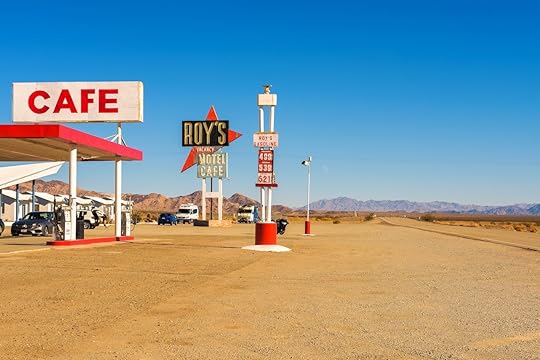
Photo: Nick Fox/Shutterstock
The option for food while you fill up has been around since at least the 1930s. It was originally a value add for gas station owners who also provided light entertainment options and a place to stay. In a way, the idea behind them wasn’t all that dissimilar from the roadside taverns of Europe in centuries past. People want services when they stop, and business owners want the money from said services.
Gas station food blossomed in the 1920s and ‘30s. Some of the fast-food restaurants we know and love today started as gas station road stands during this time, including Kentucky Fried Chicken and Steak ‘n Shake. Southland Ice Company opened in 1927 and turned into 7-Eleven, which is now the world’s largest convenience store chain. Even famed architect Frank Lloyd Wright was all about gas station food during these years, and he saw the gas station convenience store as a centerpiece of a utopian city. By the 1960s, gas stations and the food they dished out were a roadside mainstay across the country. The ensuing decades had some ups and downs, but by 2013, outlets like the Washington Post were calling gas stations the “next big thing” in dining.
It doesn’t have to be the “next big thing” to appreciate it. Gas stations create opportunities for new and small business owners to add their own regional twist to their stores. Noting what snacks are available at the gas station can give insight to the local culture just like grocery stores do.
At select Louisiana gas stations, you’ll find extremely well crafted boudin. There are Nepalese spots and Czech bakeries in Texas. Boiled peanuts from an Alabama gas station are not like those from Georgia or northern Florida. The chile-lime chicharrones in California and the Southwest hit differently than the barbecue cracklins in the Midwest. You never know what you’re going to get at a regional gas station chain, and not knowing what’s next is one of the main pleasures of a road trip.
I’m not suggesting people eat at gas stations every day. The combination of processed meat, packaged snacks, and frozen treats is best as a roadside meal, not a Monday through Friday routine. Though there are healthy options out there — just take the case of a guy named Frank Beard, who ate at nothing but gas stations for 30 days while maintaining a healthy lifestyle.
If you don’t want to trust that gas station hot dog, fine. But you’re missing out if you write off gas station food entirely the next time you’re on the road. Cobble together a meal (or whatever you want to call it) of your own making. You might end up pleasantly surprised, or you might end up disgusted. That’s all part of the fun. 
More like thisRoad TripsWhat it’s like to drive cross country during the pandemic
The post Why gas station food is one of the best parts of a road trip appeared first on Matador Network.

Grand Canyon fallen rock footprints

Some of the oldest tracks of shelled, egg-laying animals ever recorded have just been confirmed to exist in Grand Canyon National Park.
In 2016, geology professor Allan Krill was hiking with students when he noticed a boulder lying next to the trail containing fossil footprints. He took a photo and sent it to Stephen Rowland, a paleontologist at the University of Nevada.
According to Rowland, the tracks “are by far the oldest vertebrate tracks in Grand Canyon, which is known for its abundant fossil tracks. More significantly, they are among the oldest tracks on Earth of shelled-egg-laying animals, such as reptiles, and the earliest evidence of vertebrate animals walking in sand dunes.”
“Some of the conclusions likely are going to be controversial,” Mark Nebel, the paleontology program manager at Grand Canyon, told the Associated Press. “There’s a lot of disagreement in the scientific community about interpreting tracks, interpreting the age of rocks, especially interpreting what kind of animal made these tracks.”
The tracks are currently believed to be from two separate animals, who have lateral-sequence walk and move one leg at a time — the same way cats and dogs do when they walk very slowly.
The boulder had fallen from a nearby cliff-exposure of the Manakacha Formation and is visible for those who use the Bright Angel Trail. It’s unknown if the rock will stay where it is and be part of a special display or be relocated to a museum. 
More like thisArchaeologyArchaeological digs around the world you can actually partake in this year
The post Fallen rock reveals 313-million-year-old fossil footprints in the Grand Canyon appeared first on Matador Network.

Mermaid statues to be planted in FL

If you were obsessed with Disney’s Little Mermaid as a kid and dreamed of life under the sea, then head to West Palm Beach, FL. There, 1000 Mermaids Artificial Reef Project is using real people as molds to create mermaid sculptures from sustainable limestone and cement.
Founded by artists Ernest Vasquez and Sierra Rasberry, the nonprofit’s work aims to replenish the local reef and expand fishery populations through the creation of an underwater garden made up of the environment-friendly models. On August 21, 1000 Mermaids deployed the first batch of 50 sculptures. Its goal is to plant at least 1,000 statues, so you still have a chance at having a replica of yourself — with a tail.
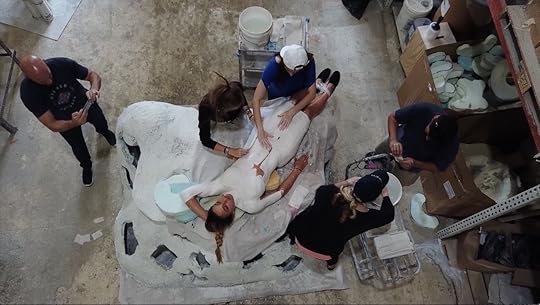
Photo: 1000 Mermaids Artificial Reef Project
The sculpture garden will have a two-fold function: boost ocean health and serve as an underwater art installation where divers will be able to explore freely.
According to the official website, “Mermaids have long been a symbol of humans’ connection to the Ocean, and this artificial reef is being created by body casting real people in the form of mermaids on ocean-friendly artistically crafted reef modules that will allow their likeness and legacy to live forever on the seafloor.”
The project also aims to boost economic growth in the region by promoting eco-tourism, research opportunities, and transforming the area into a world-class diving destination. 
More like thisNewsA freaky Stranger Things drive-thru experience is coming this October
The post You can be immortalized as a mermaid statue in an underwater garden in Florida appeared first on Matador Network.

State park dedicated to Marsha J

On Monday, New York Governor Andrew Cuomo announced that Brooklyn’s East River State Park would be named in honor of Marsha P. Johnson, an LGBTQ civil rights activist, on what would have been her 75th birthday.
This is the first state park in New York to honor a LGBTQ person and transgender woman of color. The state is planning to improve park facilities and install public artwork celebrating to Johnson’s life and the LGBTQ movement.

Photo: New York State
In a tweet, Cuomo said, “I’m proud to announce the dedication of East River State Park in Brooklyn to #MarshaPJohnson. Today, Marsha P. Johnson State Park becomes the first State Park to honor an LGBTQ person. NY is indebted to her for her brave advocacy and relentless fight for LGBTQ equality.”
I'm proud to announce the dedication of East River State Park in Brooklyn to #MarshaPJohnson.
Today, Marsha P. Johnson State Park becomes the first State Park to honor an LGBTQ person.
NY is indebted to her for her brave advocacy and relentless fight for LGBTQ equality. pic.twitter.com/mMNo6jqQcI
— Andrew Cuomo (@NYGovCuomo) August 24, 2020
In a statement, he added, “Too often, the marginalized voices that have pushed progress forward in New York and across the country go unrecognized, making up just a fraction of our public memorials and monuments. Marsha P. Johnson was one of the early leaders of the LGBTQ movement, and is only now getting the acknowledgement she deserves. Dedicating this state park for her, and installing public art telling her story, will ensure her memory and her work fighting for equality lives on.”

Photo: New York State
Johnson was a cornerstone of the fight for LGBTQ rights in New York City in the 1960s. One of the first to advocate for transgender women of color, she also helped lead the Stonewall uprising in 1969. Johnson also founded the Street Transgender Action Revolutionaries, a group that helped homeless transgender youth.
Johnson died in 1992 at the age of 46. When her body was found in the Hudson River, her death was initially ruled as suicide, but police reopened the investigation in 2012 amid her family’s claims of foul play. The investigation remains unsolved. 
More like thisOutdoorThe top 10 destinations in the US for LGBTQ travelers this fall
The post NY state park now dedicated to LGBTQ civil rights activist Marsha P. Johnson appeared first on Matador Network.

Matador Network's Blog
- Matador Network's profile
- 6 followers



